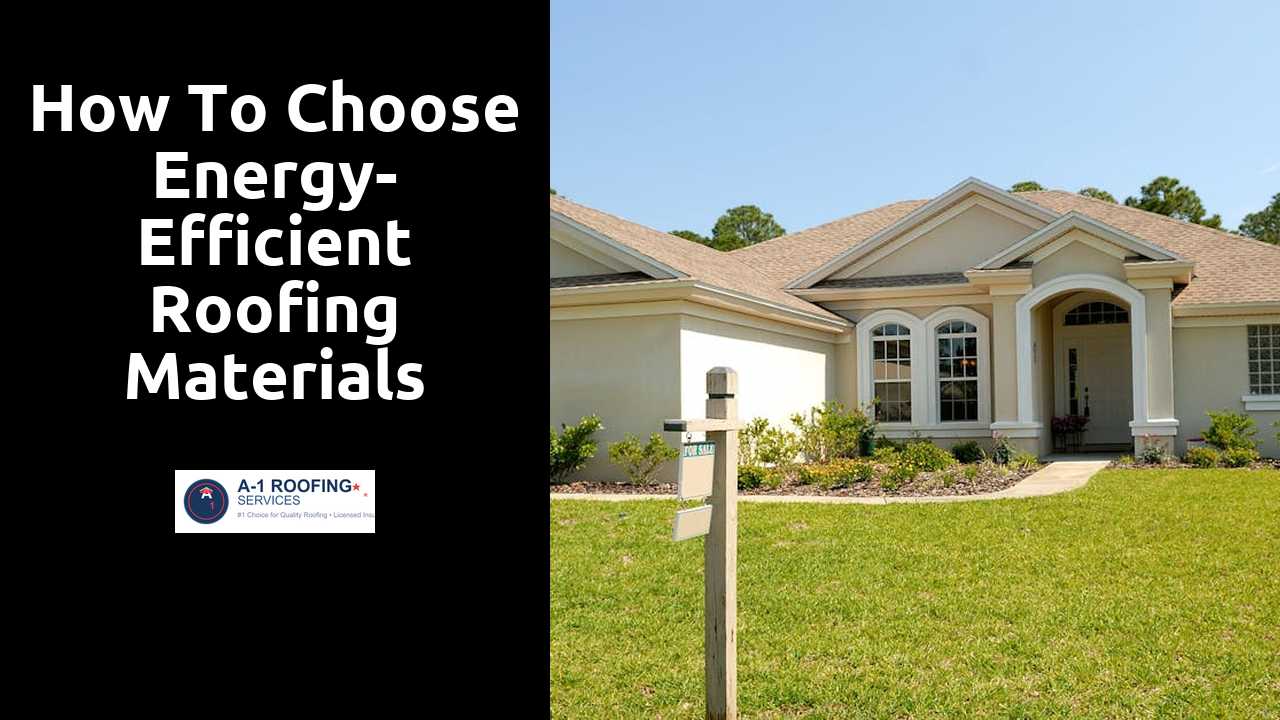
How to Choose Energy-Efficient Roofing Materials
Table Of Contents
Roofing Material Durability and Longevity
Durability and longevity are crucial factors when selecting roofing materials. Higher quality products typically offer greater resistance to weather conditions, pests, and general wear and tear. Materials like metal, slate, and concrete tiles tend to withstand harsh climates, providing reliable shelter for decades. Homeowners should consider how material choices influence not just immediate aesthetics but also long-term upkeep and replacement needs.
When a roof can resist damage over time, it reduces the frequency of repairs and replacements. This enhances the overall energy efficiency of the home by maintaining consistent insulation and minimizing leaks. Investing in a durable roofing material can yield significant benefits for energy savings, ensuring that heating and cooling systems function effectively for extended periods without interruption.
Here is a super informative post that goes into more detail.
Impact on Energy Efficiency Over Time
The performance of roofing materials significantly influences a building's energy efficiency throughout its lifespan. Over time, factors such as weather exposure, temperature variability, and material degradation can impact the thermal resistance of the roof. High-quality materials tend to maintain their insulating properties longer than lower-quality options, which may lose effectiveness as they age. Regular maintenance can also play a crucial role in preserving energy efficiency, ensuring that roofs remain in optimal condition to reflect sunlight and reduce heat absorption.
Moreover, newer roofing technologies often incorporate reflective coatings or advanced insulation systems that enhance energy performance over the years. As buildings age, investing in energy-efficient roofing can lead to reduced energy costs, contributing to a more sustainable living environment. Understanding how different materials respond to long-term wear and tear is essential for making informed decisions about roofing choices that not only save energy but also enhance comfort and reduce utility expenses.
Cost Analysis of Energy-Efficient Roofing
When evaluating energy-efficient roofing options, understanding the cost can be pivotal in making a sound investment. Initial expenses often appear higher with materials designed for energy efficiency. However, these costs must be balanced against the potential savings on energy bills over time, which can significantly offset the increased upfront investment. Energy-efficient roofs often feature superior insulation and reflective properties, leading to reduced heating and cooling costs in the long run.
Additionally, local incentives and rebates for using energy-efficient materials can further alter the financial landscape. Homeowners should investigate any available tax credits or utility company credits that can mitigate initial expenditures. By conducting a thorough cost analysis, including potential savings and available incentives, homeowners can make informed decisions that align financial considerations with long-term benefits.
Upfront Investment vs. Long-Term Savings
When considering roofing materials, the initial cost may appear daunting, especially with energy-efficient options that can carry a higher price tag. However, these materials often have extended lifespans and enhanced durability, reducing the frequency and cost of replacements. Additionally, investing in better insulation can lead to considerably lower energy bills over time, making the upfront expenses more justifiable.
Long-term savings can also be attributed to potential tax incentives and rebates for energy-efficient home improvements. Homeowners may find that enhanced energy efficiency increases property values, allowing for a better return on investment if they choose to sell. Prioritizing energy-efficient roofing not only addresses immediate financial concerns but also paves the way for significant future savings and environmental benefits.
Installation Considerations for Energy-Efficient Roofing
When installing energy-efficient roofing, choosing the right contractor is essential. A qualified contractor will understand the specific requirements of various energy-efficient materials and how they function. Their expertise ensures that installation adheres to best practices and local building codes, contributing to the overall effectiveness of the roofing system.
Proper installation also involves assessing the existing roof structure. Sometimes, additional reinforcement or modifications may be necessary to support new materials. Addressing these factors upfront can prevent future issues, ensuring that the roofing system performs optimally over its lifespan. Homeowners should also discuss warranty options with their contractors, as these can provide added peace of mind regarding the longevity and durability of the investment.
Hiring a Qualified Contractor
Selecting the right contractor for energy-efficient roofing installations can significantly influence the outcome of the project. Researching local contractors with experience in energy-efficient materials is crucial. Checking reviews and asking for references helps in assessing their reliability and craftsmanship. It is also beneficial to inquire about their familiarity with different roofing systems, as some materials require specialized knowledge for optimal installation.
Additionally, obtaining multiple bids can provide insights into the standard pricing for the services you need. A detailed written estimate should include costs associated with materials, labor, and any potential additional charges. Communication is key; ensure that the contractor can explain the benefits of the selected materials and the installation process. Trusting your contractor's expertise can lead to a satisfactory, energy-efficient roofing solution that meets your expectations.
Related Links
Innovations in Solar Roofing TechnologiesThe Advantages of Cool Roofs in Residential Areas